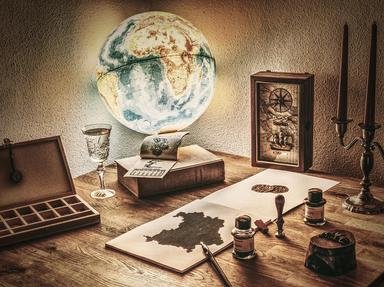Quiz Answer Key and Fun Facts
1. Heading west out of Los Angeles and into the Pacific Ocean, we fly over an archipelago of eight islands known as the Channel Islands. Which of these, which actually lies a bit to the south of our flight, is the only one of the Channel Islands to have a substantial permanent settlement?
2. On the west side of the Pacific Ocean, we find ourselves flying over the southern part of the island of Honshu, near the city which was the site of the first use of nuclear weapons in warfare. Which Japanese city was this?
3. The 38th parallel defines the Demilitarized Zone in Korea.
4. The 34th parallel crosses Tibet. In 1951, Tibet was annexed by what neighbouring country?
5. Continuing westwards, the 36th parallel takes us to a Greek island that was famous as the site of a large statue, one of the Seven Wonders of the Ancient World. Which island are we visiting now?
6. Continuing west, we arrive at the largest island in the Mediterranean Sea. Which Italian island is it?
7. The 36th parallel passes a mere two metres south of Punta de Tarifa, Spain. What is significant about Punta de Tarifa?
8. Across the Atlantic, the 38th parallel passes just north of the town of Chincoteague, Virginia. For what is Chincoteague famous?
9. The 35th parallel defined the southern border of the state of Tennessee. It therefore forms the northern border of three states. Which of these is NOT one of those states?
10. Which research facility, located just northwest of Santa Fe, New Mexico, was known as Project Y during World War II?
Source: Author
looney_tunes
This quiz was reviewed by FunTrivia editor
agony before going online.
Any errors found in FunTrivia content are routinely corrected through our feedback system.
